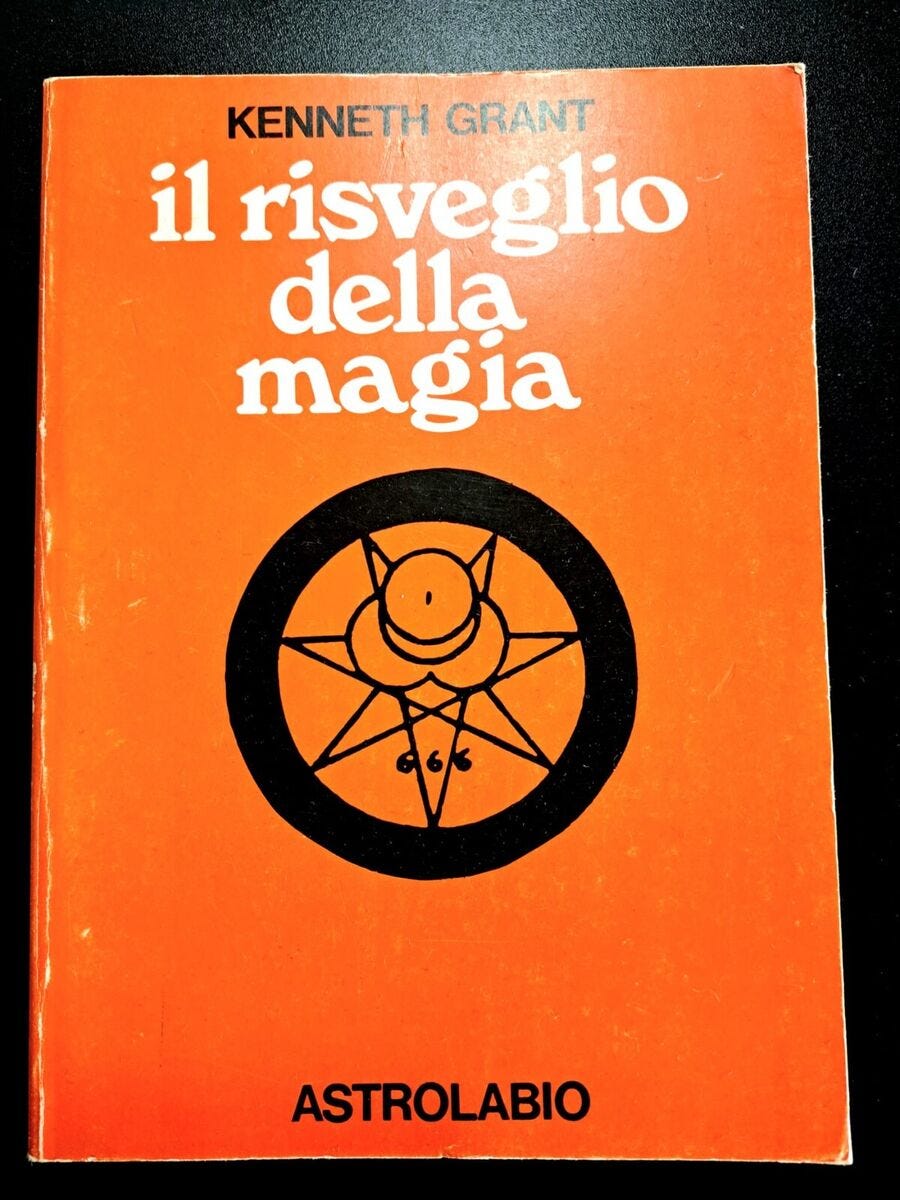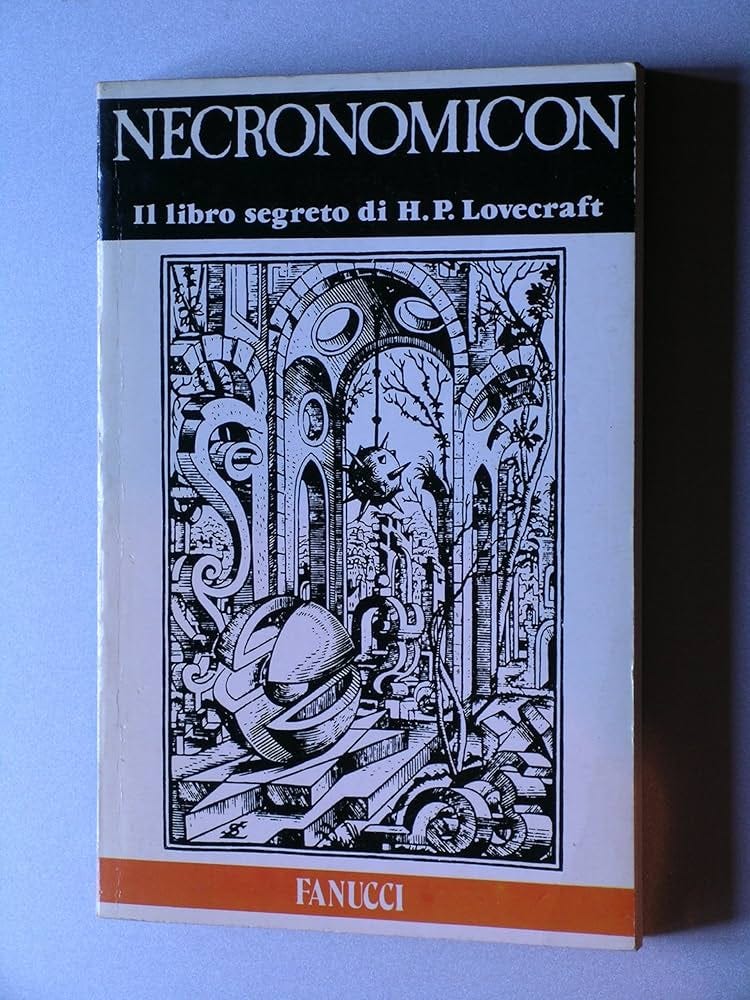BLACK STARS IN DIM CARCOSA
Necronomicon Part I: the Mythos Gnosis from "Simon" to Modern Occult Currents
As I write these words on April 2nd, the shadow of cosmic memory lingers. Today is no ordinary date in the Lovecraftian calendar: it was on this day in 1925 that the events of The Call of Cthulhu were said to begin, when "every trace of Wilcox’s malady suddenly ceased."
The young artist Henry Anthony Wilcox, who had been plagued by fevered dreams and delirious ramblings about bizarre landscapes, cyclopean cities, and monstrous entities, abruptly recovered—just as mysteriously as he had fallen ill. His dreams, filled with strange hieroglyphs and a chant echoing the dreaded name Cthulhu, had deeply disturbed Professor George Gammell Angell, who had been investigating similar reports from other dreamers around the world. Wilcox's sudden return to normalcy marked not only the end of his personal nightmare, but the beginning of a much larger, more disturbing unraveling. For this abrupt cessation of his visions coincided with global reports of madness, cult activity, and seismic disturbances in the South Pacific—signs that something ancient had stirred in its slumber.
A fictional detail, perhaps, but one that resonates deeply for those of us who walk the fine line between the mythic and the real. When you’ve worked this current long enough, you begin to feel that these things are not coincidences. They are alignments. And the stars, as always, are right.
The Necronomicon – a fictional grimoire imagined by horror writer H. P. Lovecraft – has evolved into a ritual map in modern occult practice. In particular, the 1977 publication of the “Simon” Necronomicon (compiled by an anonymous editor known as “Simon”) transformed Lovecraft’s dark mythology into a practical magical system. This controversial text, blending Mesopotamian mythology with Lovecraftian lore and Crowleyan occultism, became an unlikely foundational text for what practitioners now call Necronomicon Gnosis.
Black Stars in Dim Carcosa
The upcoming online course Black Stars in Dim Carcosa (starting June 4, 2025) will explore how the Necronomicon serves as a ritual map – from its historical emergence to its impact on modern occult currents – featuring a special session with Peter Levenda, who was present at the Simon Necronomicon’s inception.
With this series of articles I aim to provide an overview of that Necronomicon Gnosis, focusing on some of the key figures who adapted Lovecraftian and Mesopotamian themes into practical magick: Kenneth Grant, Asenath Mason, and Karl Stone. We will examine how each built upon the Simon Necronomicon’s legacy, highlight thematic overlaps and divergences in their approaches, and show how their contributions inform the practice-based, initiatory structure of the upcoming course.
This course is deeply personal to me—not just an offering of ideas, but a convergence of decades of magical work, obsession, study, and initiation.
Most people who know me through my writing or social media likely associate me first and foremost with Thelema—and that’s not incorrect. But what’s rarely visible online is how wide-ranging my magical praxis has always been, and how many currents I’ve explored in private. That’s something I think is crucial to emphasise, especially today: what we show online is only ever a fraction of who we are, and anyone who believes a person’s spiritual path begins and ends with their social media feed is mistaking the map for the terrain.
In truth, my introduction to magick didn’t begin solely with Crowley—it began also with Kenneth Grant, whose books were among the very few available in Italian in the early 1990s.
His writing was mesmerising and disorienting in equal measure: arcane, poetic, and sprawling. At a time when I was just beginning to sense there was something deeper behind dreams and symbols, Grant’s fusion of Thelema, Tantra, and Lovecraftian mythology felt like a secret being whispered directly into my bones. It was only years later—when I connected with other Thelemites—that I realised how dismissive the broader Thelemic community often was of Grant’s work. His interest in "fictional" entities like Cthulhu or Yog-Sothoth was labeled as unserious or even delusional. But to me, it was precisely this creative, syncretic, visionary approach that made his system so powerful. He wasn’t trying to “believe” in Lovecraft’s gods literally—he was using them as mythological engines to rupture consensus reality and access the liminal.
This spoke deeply to me because H. P. Lovecraft was already one of my first obsessions. In my teenage years, I was spellbound by his concept of cosmic horror—the idea of a universe so vast and uncaring that it renders the human mind irrelevant. It wasn’t nihilism; it was revelation. I hunted down every recension of the Necronomicon I could find—George Hay’s edition, the Simon version, bootleg Word documents passed around in occult BBS forums—anything that claimed to peel back the veil.
That pseudobiblium fascinated me endlessly. Not because I believed it was “real” in the historical sense, but because I knew it was alive—a living thought-form, a text that existed in the dreaming mind of the magical imagination.
In the early 2000s, I had the immense privilege of corresponding with Kenneth Grant directly. I was working on helping translate parts of his books into Italian, and our exchanges—by letter, always—were a masterclass in magical thinking. He was warm, generous, and unfailingly poetic. It was during these conversations that I truly understood his view: that Lovecraft’s mythos was never about fictional monsters, but about a symbolic language for entering non-ordinary states of consciousness. It was art as initiation. And what disturbed the so-called “serious” occultists wasn’t that he took fiction seriously—it was that he blurred the boundary between dream and ritual, myth and magick, in ways they couldn’t control.
Years later, my path briefly intersected with the Left-Hand Path magical order Dragon Rouge, and during that time, I met Asenath Mason in person. A dedicated practitioner and visionary, she had already immersed herself in Lovecraftian magic. Her work gradually evolved into the system now known as Necronomicon Gnosis, blending elements of the Mythos with Left-Hand Path ritual.
She stayed at my home in Rome while visiting the Italian group that would later become Lodge Sothis in Naples. Together, we performed a conjuration to Dagon on the Tyrrhenian coast in Ostia, just outside the city—standing in the surf beneath the full moon, intoning strange syllables, calling forth the spirit of a sea god most would call “fictional.”
But something answered. I felt it—like a deep vibration in the bones of the earth. That night confirmed for me what I’d always suspected: these egregores, these thought-forms, can be made to respond—not because they’re “real” in the mundane sense, but because we are real when we meet them halfway.
Around the same time, I encountered the work of Karl Stone, whose Moonchild of Yesod offered a radical synthesis of Qabalah, Typhonian magic, and hyperchemical ritual. Stone’s vivid language and intense praxis opened up new perspectives on the body, gnosis, and the interface between the human and the præter-human. His approach to the Moonchild—not just a symbol, but as an alchemical event within consciousness—deepened my appreciation for the Necronomicon’s more transgressive and transformative possibilities.
And now, two decades on, I find myself working closely with Peter Levenda—a friend, collaborator, and someone who stood witness to the emergence of the Simon Necronomicon fifty years ago. Peter wrote the foreword to my first book and has been involved in many of my public and private projects since. His deep knowledge of esoterica, history, and the hidden architectures of power has profoundly shaped how I understand the Simon Necronomicon—not just as a curious artifact of 70s occultism, but as the birth of a new magical current that fused ancient rites, modern myth, and postmodern experimentation into something singular.
Something Stirs in the Depths
It is from this lived convergence of influence, ritual, correspondence, and practice that Black Stars in Dim Carcosa emerges. This course is not a retrospective—it’s a continuation. A reactivation. A way of threading together everything I’ve learned from Grant, Mason, Stone, Levenda, and my own strange path through the dreamways. You don’t have to “believe” in the Necronomicon to work with it. You only have to be willing to enter its gates—and see what answers when you call.
This piece is only the beginning—an introductory reflection to mark a date of significance. In the coming installments, we will delve deeper into the work of each of the major figures named above, unpacking how their contributions shaped the Necronomicon current and revealing how their insights will inform the initiatory arc of the course.
Each step forward brings us closer to the gate—and beyond it, the stars await.










On the one hand I am glad to own that smaller paperback of the Necronomicon - in mint condition because it is still unread (I never dared or perhaps bothered), on the other like Lovecraft I hate seafood with tentacles. But if Cthulhu is a "mythological engine" nothing beats nausea or hate whenever strong (negative) emotions are called for. But we must not forget: We cannot love entities like Cthulhu or barter with them. And psychological models of magical doings based on the Mythos seem to me a shortcut to madness since death and insanity lurk in most Lovecraftian tales even though there ARE some in which the protagonist prevails.
That's why I very much admire your courage when you decided to do that Lovecraftian work with Asenath Mason on the beach with feeling "something" afterwards. I am completely convinced that your work was successful and your perception right and that there was something. But what was it? This was surely more than just an echo out of a "non-ordinary state of conciousness" which incidentally is an apt term, I think. But how can the magus protect himself efficiently during and after the operation?
Perhaps I have been reading too much of this (I can't help it, though - not that I ever wanted to).
Anyway thank you so much. All the best.
Yes. We are entering the age of Cthulhu- truth beyond reason, acausal reality. 🐙